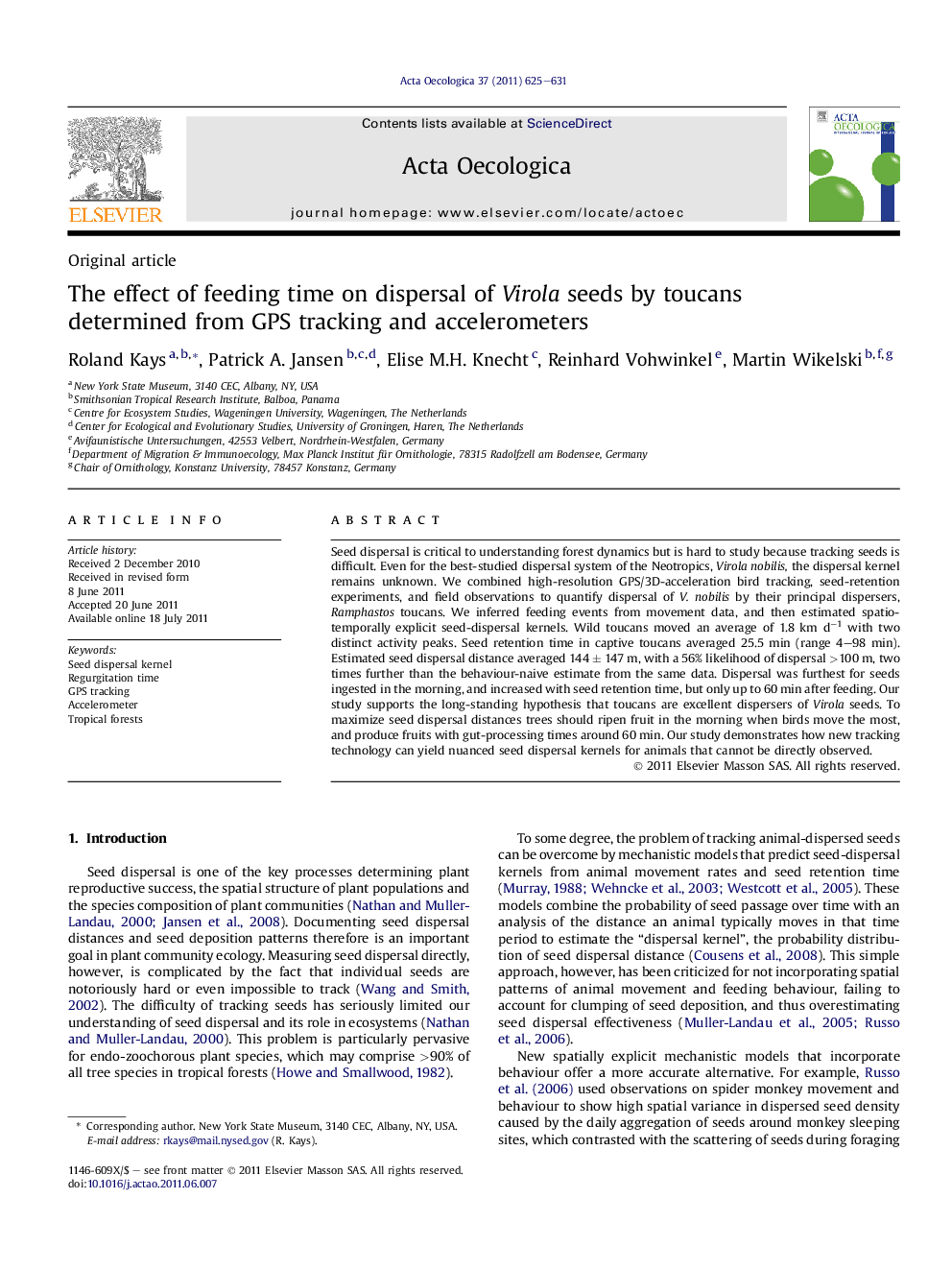| کد مقاله | کد نشریه | سال انتشار | مقاله انگلیسی | نسخه تمام متن |
|---|---|---|---|---|
| 4381353 | 1304067 | 2011 | 7 صفحه PDF | دانلود رایگان |

Seed dispersal is critical to understanding forest dynamics but is hard to study because tracking seeds is difficult. Even for the best-studied dispersal system of the Neotropics, Virola nobilis, the dispersal kernel remains unknown. We combined high-resolution GPS/3D-acceleration bird tracking, seed-retention experiments, and field observations to quantify dispersal of V. nobilis by their principal dispersers, Ramphastos toucans. We inferred feeding events from movement data, and then estimated spatio-temporally explicit seed-dispersal kernels. Wild toucans moved an average of 1.8 km d−1 with two distinct activity peaks. Seed retention time in captive toucans averaged 25.5 min (range 4–98 min). Estimated seed dispersal distance averaged 144 ± 147 m, with a 56% likelihood of dispersal >100 m, two times further than the behaviour-naive estimate from the same data. Dispersal was furthest for seeds ingested in the morning, and increased with seed retention time, but only up to 60 min after feeding. Our study supports the long-standing hypothesis that toucans are excellent dispersers of Virola seeds. To maximize seed dispersal distances trees should ripen fruit in the morning when birds move the most, and produce fruits with gut-processing times around 60 min. Our study demonstrates how new tracking technology can yield nuanced seed dispersal kernels for animals that cannot be directly observed.
► We tracked toucans with GPS tags and modeled their dispersal of seeds.
► Estimated seed dispersal distance averaged 144 ± 147 m with a 56% likelihood of dispersal >100 m.
► We inferred feeding from GPS data and found dispersal was furthest for seeds eaten in the morning.
► Fruits eaten in the afternoon were more likely to accumulate under night roosts.
► We predict that trees targeting bird dispersers ripen fruit in the morning to maximize dispersal.
Journal: Acta Oecologica - Volume 37, Issue 6, November–December 2011, Pages 625–631